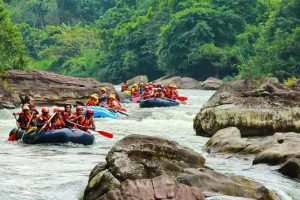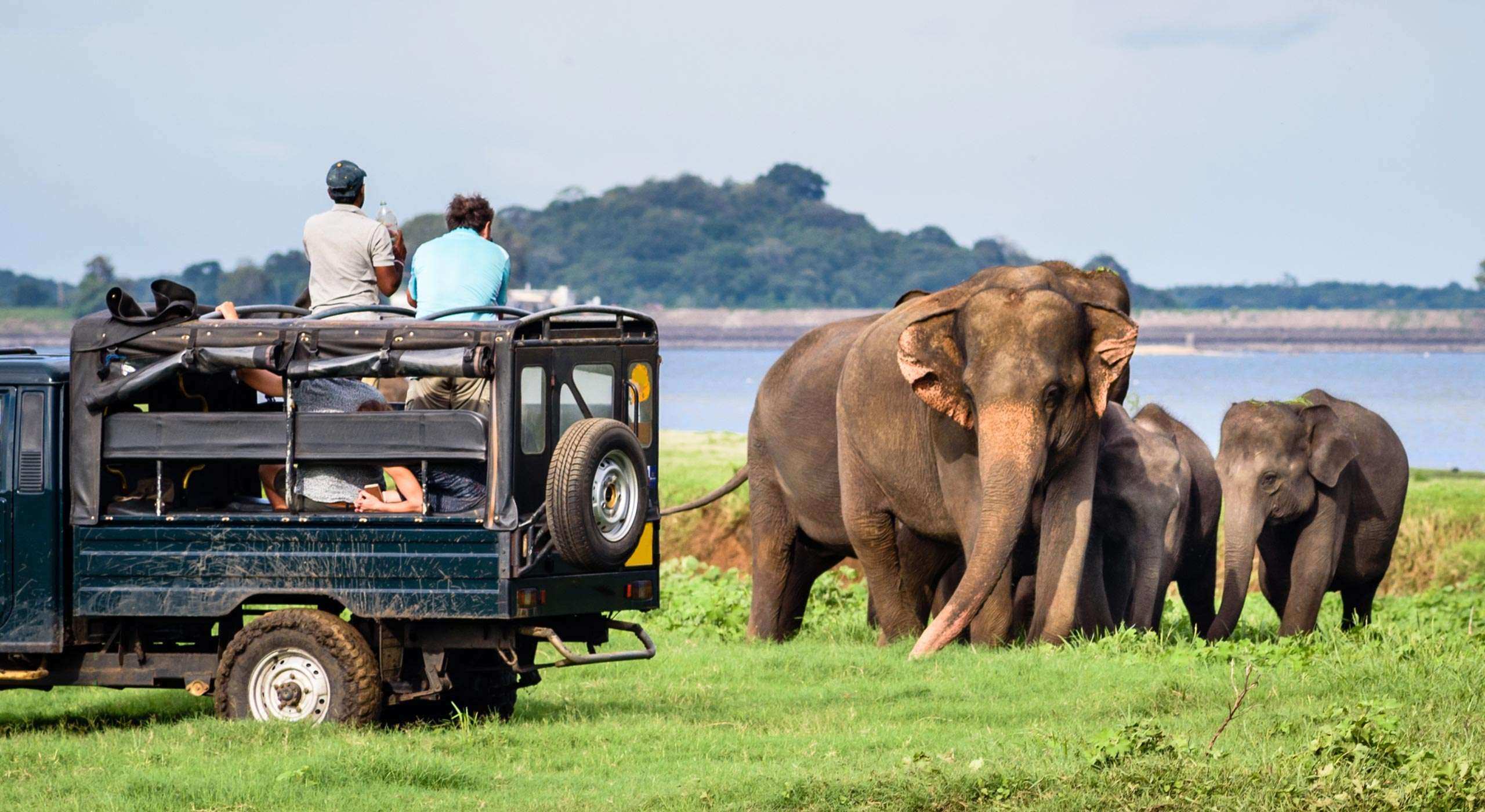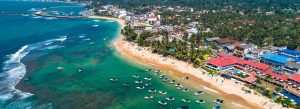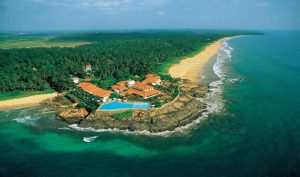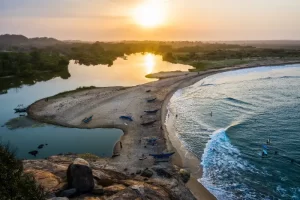Yala National Park, also known as Ruhuna National park is one of the most visited safari locations in Sri Lanka. With monkeys crashing through the trees, peacocks in their magnificent frocks, elephants ambling about and cunning leopards sliding like shadows through the undergrowth, Yala National Park is the most celebrated wildlife park in Sri Lanka for over a century.
The park consists of five blocks, two of which are now open to the public and also adjoining parks. The blocks have individual names such as, Ruhuna National Park and Kumana National Park or ‘Yala East’ for the adjoining area. It is situated in the southeast region of the country, and lies in Southern Province and Uva Province. The park covers 979 square kilometres and is located about 300 kilometres (190 mi) from Colombo. The Yala block 1 which is also called as the Ruhunu National park, is about 140 km2 in extent, is open for public viewing from 05:30 am to 06:30 pm after which you have to vacate the park, unless you have opted to stay in one of the camp sites or bungalows inside the park. The ideal time to explore this vast nature reserve would be during the break of dawn and the fall of dusk. Yala block II is for the more adventurous as it involves several river crossings and a four wheel drive vehicle with all terrain driving capabilities to venture deep inside the wilderness, but you’ll also need backup vehicle to venture into Yala Block II, where you’ll encounter less disturbed wildlife but are very shy of noises and will beat a hasty retreat into the shades.
The climate of Yala National Park is semi-arid and dry with scrub jungle unique to this area along with rocky outcrops like kotigala, Jamburagala & Patalungala (Pattangala) strewn about the park, while several fresh and brackish water lagoons dot the park.
The Yala National Park has a long history of nearly 500 years. In 1560 Spanish cartographer Cipriano Sanchez noted Yala in his map mentioning that the area “is abandoned for 300 years due to insalubrious conditions.” Chief Justice Sir Alexander Johnston wrote a detailed account on Yala in 1806 after travelling from Trincomalee to Hambantota. On March 23, 1900 the government proclaimed Yala and Wilpattu reserves under the Forest Ordinance. Initially the extent of the reserve was 389 square kilometres (150 sq mi) between the Menik and Kumbukkan Rivers. At that time the reserve did not bear the name Yala. The Game Protection Society (now the Wildlife and Nature Protection Society) was instrumental in establishing the reserve. The forest area between Palatupana and Yala was declared a hunting site reserved only for the resident sportsmen. Henry Engelbrecht was appointed as the first park warden. On 1 st of March 1938, Yala became a national park when the Flora and Fauna Protection Ordinance was passed into law by D. S. Senanayake, the minister of agriculture.
Yala National park is best known for its variety of wild animals. It is important for the conservation of Sri Lankan elephants, Sri Lankan leopards and aquatic birds. Apart from the elephants, leopards and birds, It is also the ideal place to spot the sloth bear and the wild buffalo, the unsung denizen of the park, if nothing else dangerous to the extreme. The roaming elephant herds can be easily seen during dry spells at the small scale reservoirs like Butuwe.
According to recent studies, Yala is said to have the highest population of the elusive Sri Lankan leopard, also known as the ‘Panthera pardus kotiya’, in Sinhalese. “The Prince of Dusk”, the apex predator in Sri Lankan national parks and arguably the most versatile of all felines in adaptability on earth perhaps the most famous inhabitant of Yala. The Sri Lankan leopard is also known to be the biggest of the eight known species of leopards’ in the whole world, with the possible exception of Amur leopards. The leopards are more elusive and primarily nocturnal in other countries, but are easier to spot in Yala, Sri Lanka than any other place in the world due to the lack of any other predators’ presence, to challenge its domain. Should you witness a kill on a leopard safari, quite often the prey is larger than the leopard, which really gives insight into how powerful these animals really are.
There is also a substantial elephant population along with Spotted deer, Sambar, Wild buffalo, Sloth bear, Jackal, Mongoose, Pangolins and Crocodiles. The bird life comprises over 120 species, seven are endemic to Sri Lanka. They are Sri Lanka grey hornbill, Sri Lanka junglefowl, Sri Lanka wood pigeon, crimson-fronted barbet, black-capped bulbul, blue-tailed bee-eater and brown-capped babbler. The number of waterbirds inhabiting wetlands of Yala is 90 and half of them are migrants. Waterfowl, cormorants, large waterbirds, which are the grey heron, black-headed ibis, Eurasian spoonbill, Asian openbill, painted stork, medium-sized waders and small waders are among the common waterbirds. Black-necked stork and lesser adjutant are the rare birds that can be seen in the park. The migrant great white pelican and resident spot-billed pelican are also have been recorded. Other waterbirds attracted to the Yala lagoons include lesser flamingo, and pelicans, and rare species such as purple heron, night herons, egrets, purple swamphen, and Oriental darter. Thousands of waterfowls migrate to the lagoons of Yala during the northeast monsoon. They are the northern pintail, white-winged tern, Eurasian curlew, whimbrel, godwits, and ruddy turnstone. The visiting species mingled with residing lesser whistling duck, yellow-wattled lapwing, red-wattled lapwing, and great stone-curlew. Rock pigeon, barred buttonquail, Indian peafowl, black stork, black-winged stilt, and greater flamingo are among the other bird species. Crested serpent eagle and white-bellied sea eagle are the raptors of the park. The forest birds are orange-breasted green pigeon, hornbills, Old World flycatchers, Indian paradise flycatcher, Asian barbets, and orioles.
The reptile fauna recorded from the park is 47 and six of them are endemic. Sri Lankan krait, Boulenger’s keelback, Sri Lankan flying snake, painted-lip lizard, Wiegmann’s agama and Bahir’s fan-throated lizard are the endemic species. The coastal line of the park is visited by the all five globally endangered sea turtles (leatherback turtle, olive ridley, loggerhead sea turtle, hawksbill turtle, and green turtle) that visit Sri Lanka. The two breeding crocodile species of Sri Lanka, mugger crocodile and saltwater crocodile inhabit the park. The Indian cobra and Russell’s viper are among the other reptiles.
Every wildlife safaris in Sri Lanka will have the same objective; to see the most of what the Park has to offer in the shortest amount of time. So it is possible to take full day jeep safaris or to split your day into morning and afternoon drives. Your best chance to see a leopard is generally early in the morning and then again at dusk. You can stay until just after dark inside the park, thus maximizing your chances of bumping into a magnificent leopard.
